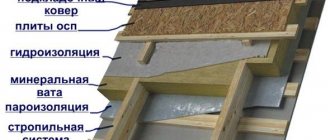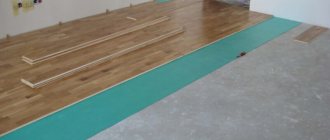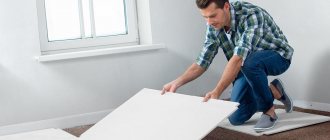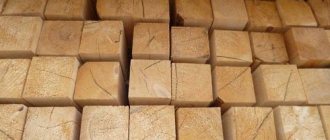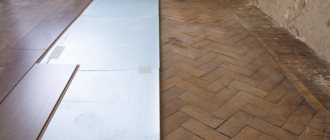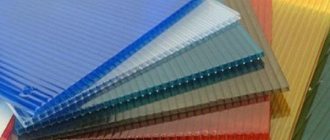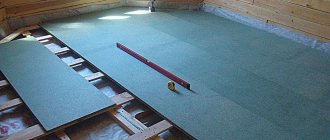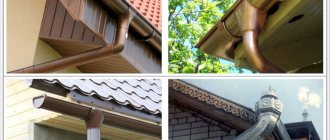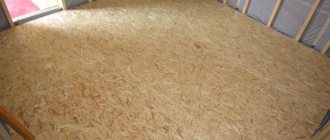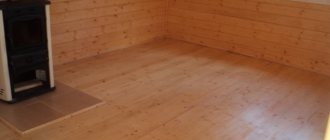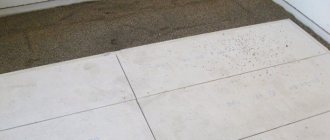Expert answers: 1
In addition to the covering itself, the material kit for installing a soft roof includes a lining carpet for flexible tiles. You also have to pay for it. The cost of underlay carpet for soft tiles is quite high, comparable to the price of the tiles themselves.
Do you need an underlay carpet for a soft roof, or can you do without it? After all, the finishing coating and the carpet have the same composition (bitumen + fiberglass). In addition, tiles are also waterproof material. Let's figure it out.
Underlay carpet for a soft roof - why is it needed?
Lining material for soft roofing has two main functions:
- it smoothes out unevenness in the installation of the sheathing (joints of sheets, seams between boards). This is necessary to prevent air bubbles from forming under the tiles;
- enhances the waterproofing effect of tiles. First of all, this is necessary in the most vulnerable places - roof components: valleys, cornices, junctions with pipes, roof windows, etc.
note
The waterproofing function of the carpet is especially important in the first time after laying the tiles, if the installation was carried out in cool weather.
In the bright sun, the tiles slightly melt and stick together, creating a continuous sealed surface. Until this happens, water may penetrate into the joints. The technology for laying the coating is described in the manufacturer's instructions. If the technology is violated, the manufacturer may refuse to fulfill warranty obligations. Installation of carpet in one form or another is required, regardless of the brand of material.
Which underlayment is better for flexible tiles?
Based on the installation method, there are two types of carpets: self-adhesive and without an adhesive layer. Self-adhesive is easier to install; there is no need to make holes in the coating for fastening. The quality of the backing depends on the base material: polyester is more reliable than fiberglass, and the thickness of the carpet is less.
The technology for making carpets and finishing coverings varies from brand to brand. It is recommended to take both of the same brand. The manufacturer makes a backing specifically for its tiles; if the instructions are strictly followed, there will be no unpleasant surprises.
The price of underlayment for soft tiles varies, as does the cost of the tiles themselves. For example, the lining carpet for soft Shinglas tiles, produced in collaboration with the Spanish company Chova, exists in several modifications:
- ANDEREP PROF is quite lightweight, about 0.4 kg/m2 and quite durable lining material, a polyester-based material, half a millimeter thick. The material has a non-slip surface made of polypropylene (Spunbond) with a guarantee of UV protection. This underlayment can be used under any type of roofing. Its special advantage is that it can be used as a temporary roof, if for some reason you need to take a break from work for up to 6 months when installing the roof. It costs about 3.5 thousand rubles per square, if you take it complete with tiles. If separately, it is more expensive, more than 4,000 rubles. / m2;
- ANDEREP BARRIER - a carpet with a self-adhesive layer, with a high-strength polyester base and a fine-grained top layer, the thickness is the same - 2300 and 2800 rubles / m2, respectively. Barrier OS GC is a very durable material, which is used mainly for reliable waterproofing of roofs made of flexible tiles, as well as for roofs with a finishing coating made of natural slate, ceramic tiles, composite tiles or shingles.
- ANDEREP GL PLUS - carpet based on fiberglass with a thickness of up to 1.7 mm - 1000 or 1200 rubles/m2. It is obtained by impregnating a durable reinforcing base (fiberglass) with bitumen-polymer binder with the addition of SBS polymers. Subsequently, the top layer is protected with non-woven polypropylene (Spunbond), and the bottom layer with fine-grained sand with the application of a special self-adhesive edge protected with a siliconized film. It is used as an underlay waterproofing carpet in pitched roof structures with a finishing coating of bituminous tiles.
For open valleys, manufacturers produce a special valley carpet. With this type of substrate, in addition to the valleys themselves, abutments can be processed.
For example, TechnoNIKOL valley carpet is used for reliable waterproofing of internal roof fractures (valleys), which are exposed to snow and rain loads. This valley carpet can be used to seal junctions with vertical walls and pipes. The basis of the carpet is polyester, a type of SBS polymer; basalt granulate is applied on the upper side, and fine-grained sand is applied on the lower side. Geometric dimensions: 1m x 10m x 0.7 mm.
Design
The lathing used for installing a flexible roof differs from that used in the case of metal profile flooring. Bituminous shingles are a flexible material that does not have a rigid shape, so it must be laid on a solid base. Therefore, the design of the roofing pie for this roofing material consists of the following elements:
- Counter-lattice. This element is made of wooden slats 2-3 cm thick, which are attached along the rafter legs. They serve to fix the waterproofing film and organize a ventilation gap, which is necessary to improve air circulation.
- Sparse. The sparse sheathing is nailed along the slope, perpendicular to the rafters. It is made from unedged or edged boards measuring 150x20 mm in increments of 30-50 cm. The sparse lathing evenly distributes the weight of the roof between the rafters.
- Solid. The continuous sheathing used as a base for laying flexible tiles is made from sheets of moisture-resistant plywood or particle board. This structural element, in addition to its supporting function, also performs an insulating function - it plays the role of insulation and sound insulation.
Soft roof construction
Continuous sheathing
Features of ICOPAL underlay carpets
The manufacturer of the underlay carpet "IKOPAL" helped the roofer resolve many issues:
- The ICOPAL underlay carpet can completely protect the roof from leaks. It creates additional protection from precipitation, melted snow, and ice. For example, if water suddenly leaks under the top layer of the roof, a waterproofing carpet from Icopal will contain this leak;
- It improves the strength and durability of the roof. This has been verified by personal experience: if, when installing a roof, you do not use an underlayment under the tiles, but lay them directly on a solid base, this will significantly reduce the service life of the roof and ultimately lead to the destruction of the roofing due to thermal expansion of the solid base;
- And one more feature of the IKOPAL underlay carpet is that it can prevent the formation of condensation. The fact is that the under-roof carpet does not “permeate” condensation into the roof, thereby protecting the base from getting wet, mold and mildew.
Types of lining materials ICOPAL
Icopal produces FEL-X underlay carpet and K-EL universal underlay material.
Icopal Fel'X underlayment carpet is universal for almost any roof. It is a rolled bitumen-polymer composite obtained by applying binders (polymer modifiers, bitumen, filler) onto a polyester non-woven base. Moisture resistance – 0.4 kgf/cm2 effectively protects from condensation and precipitation. Supplied in rolls of 40 meters. It is unique in that, despite its low weight (only 0.5 kg/sq. m), it also has excellent tensile elongation - up to 30%. This often allows you to create excellent tension to increase the solidity of the base for flexible tiles.
K-EL underlay carpet is completely waterproof. It is made of fiberglass, onto which special binders consisting of a polymer additive, filler with bitumen are applied. Water resistance allows, as in the case of TechnoNIKOL, to use it during long breaks in construction work without fear of precipitation. Supplied in rolls of 15 meters. He is extremely flexible in his work. A distinctive feature is its low weight (2 kg/sq.m), which eliminates the need for additional reinforcement of load-bearing structures.
ICOPAL underlay carpets are installed mechanically using roofing nails in the overlap areas.
It is this mounting option that will provide you with increased reliability and a long service life of the waterproofing material.
Criterias of choice
The type of carpet is selected taking into account the roof slope and weather conditions.
A carpet for ondulin or flexible tiles is selected taking into account the following parameters .
- Manufacturer – whatever option you need, it’s worth buying a product from a trusted manufacturer. Poor quality material does not provide waterproofing. This is especially noticeable at fastening points and in areas subject to increased load.
- Angle of inclination - it is almost impossible to attach a welded carpet on slopes with a large slope. Here preference is given to the traditional option - on nails. With a small slope of the slope, a welded or self-adhesive carpet is much more convenient.
- Weather conditions - when there is a high level of precipitation, it is better to take a welded lining. When hardened, the bottom layer of bitumen polymerizes, which provides higher waterproofing properties.
Valera
The voice of the construction guru
Ask a Question
More often the materials are combined. Wide, flat surfaces are covered with a weld-on lining membrane or self-adhesive one. It is better to seal the joints, valleys, and the area around the pipe with ordinary material fastened with nails and additionally coat them with mastic.
Installation of underlay carpet under soft tiles
The lining under the soft roof is laid either as a continuous covering, or in separate sections, in knots. It depends on the steepness of the roof. On flat roofs, continuous installation of the carpet is necessary; with an average slope of the slopes, fragmentary installation is sufficient.
On very steep roofs it is also necessary to lay it completely. Something like this:
- up to 18 degrees – continuous coating;
- over 60 – solid;
- in between – fragmentary.
These numbers may be different for different brands. For example, Technonikol and Ruflex allow laying fragmentary carpet from 18 degrees, and Tegola only from 30.
The lining can be placed horizontally or vertically. Placed vertically (from the ridge to the overhang) when the slope is very steep. For small slopes, complex roof configurations, and valleys, the traditional horizontal installation method is preferable.
note
It is not recommended to install carpet in cold weather, because...
at low temperatures it loses its plasticity. Installation order:
1. If there is a valley, laying the carpet begins with it. The carpet is laid along the entire valley on bitumen glue with a 10-15 cm overlap of the next strip on the previous one.
2. Continuous installation continues on the eaves overhangs: roll out the roll along the eaves, make sure there are no bends, fix with a stapler or roofing nails in increments of 20 cm.
3. The next strip is laid with an overlap of the previous 10 cm. At transverse joints there is an overlap of 15 cm.
4. The carpet is laid over the gable strip with an overlap.
5. At the top of the slope, the substrate is cut along the ridge line and secured with bitumen glue and/or nails. A second strip is placed on the opposite side, with an overlap of 15 cm over the ridge. This is also fixed with bitumen glue.
6. At the junctions with the chimneys, wooden blocks of triangular cross-section are attached along the perimeter of the pipes. The carpet is placed on bars and placed on glue. Later (when laying the finishing coating), the tiles also need to be placed on the bars.
A few words about the price of underlay carpet
The cost of carpet underlay varies widely. In 2022 the price was as follows:
| Brand of underlay carpet | Price |
| Underlay carpet TechnoNIKOL Shinglas Anderep Gl | RUR 972/roll |
| Underlay carpet TechnoNIKOL Shinglas Anderep Ultra | RUR 2,280/roll |
| Underlay carpet TechnoNIKOL Shinglas Anderep Prof | RUR 3,680/roll |
| Underlay carpet TechnoNIKOL Shinglas Anderep Barrier | RUR 2,750/roll |
| Underlay carpet Tegola Icebar R self-compacting | RUB 2,785/roll |
| Underlay carpet Tegola Safeti SBS-2 | RUR 1,316/roll |
| Underlay carpet Icopal Fel'X | RUR 4,320/roll |
| Underlay carpet Icopal K-EL | 1190 rub./roll. |
| Underlay carpet Katepal PrimeBase | RUR 3,406/roll |
Installing underlayment for a soft roof (as well as laying the tiles themselves) is an energy-intensive task. If the technology is violated, both the coating itself and the inside of the roof - the frame and insulation - will suffer.
Contact our. We have fifteen years of experience in installing any roofs, including soft ones. We will install the carpet and finishing coating quickly, inexpensively and conscientiously.
Additional materials on the topic
Roofing pie for soft roofing
More details
Installation of drip line under soft roof
More details
Chimney passage through a soft roof
More details
Your feedback, comments, questions
Dear visitors! We will periodically answer your questions in the comments as we are busy. In order for us to respond to you promptly (within an hour), you can: call, write a personal message or leave a request for a free consultation by phone.
Comments
Vladimir 02/12/2017 19:24
+1 I don’t understand what kind of additional waterproofing of the underlayment carpet we are talking about if it is broken through with nails from fastening shingles of at least 12 pieces per 1 m2.
Reply | Reply with quote | Quote Consultation by phone +7(495) 241-00-59 Answered by Mmkhail-foreman moderator
12 pieces is too much, unless you mean that it breaks through along with the scoop. A good carpet underlay will hold up when nails are pierced through it! It fits the nails quite tightly and performs its function. I recommend not saving on carpet.
Update list of comments
What is its purpose?
In the process of laying a flexible coating, the question inevitably arises whether this material is needed as a base, or whether it is possible to do without it. The desire to save money on one of the important stages of construction work will cost you dearly in the future. The base under the roof has a purpose - leveling the roof plane and masking unevenness.
This must be done so that the material lies on the underlying surface, so as not to bulge and form depressions in some places. Moreover, the final shape will be visible only after the material shrinks under the influence of climatic factors - precipitation and wind. If defects appear over time, they will be difficult to smooth out. It is better to immediately complete the work efficiently and in a timely manner, so as not to waste extra time and money on roof repairs.
Another important property of underlayment is to provide roof waterproofing. It is needed so that, in case of urgent need, you can transfer part of the outstanding work on laying the material to another time or day and not be afraid that rain or snow will wet the house.
The soft roof is glued together over 2-3 years under the influence of high temperatures to become a completely waterproof coating. Until this moment comes, the base under it protects the roof from leaks and excess moisture.
With the help of a carpet, the pressure on particularly fragile areas of the roof is distributed equally. This allows you to extend its service life if you follow the instructions for laying the base. Without it, the roof will not be able to withstand external influences for long.
